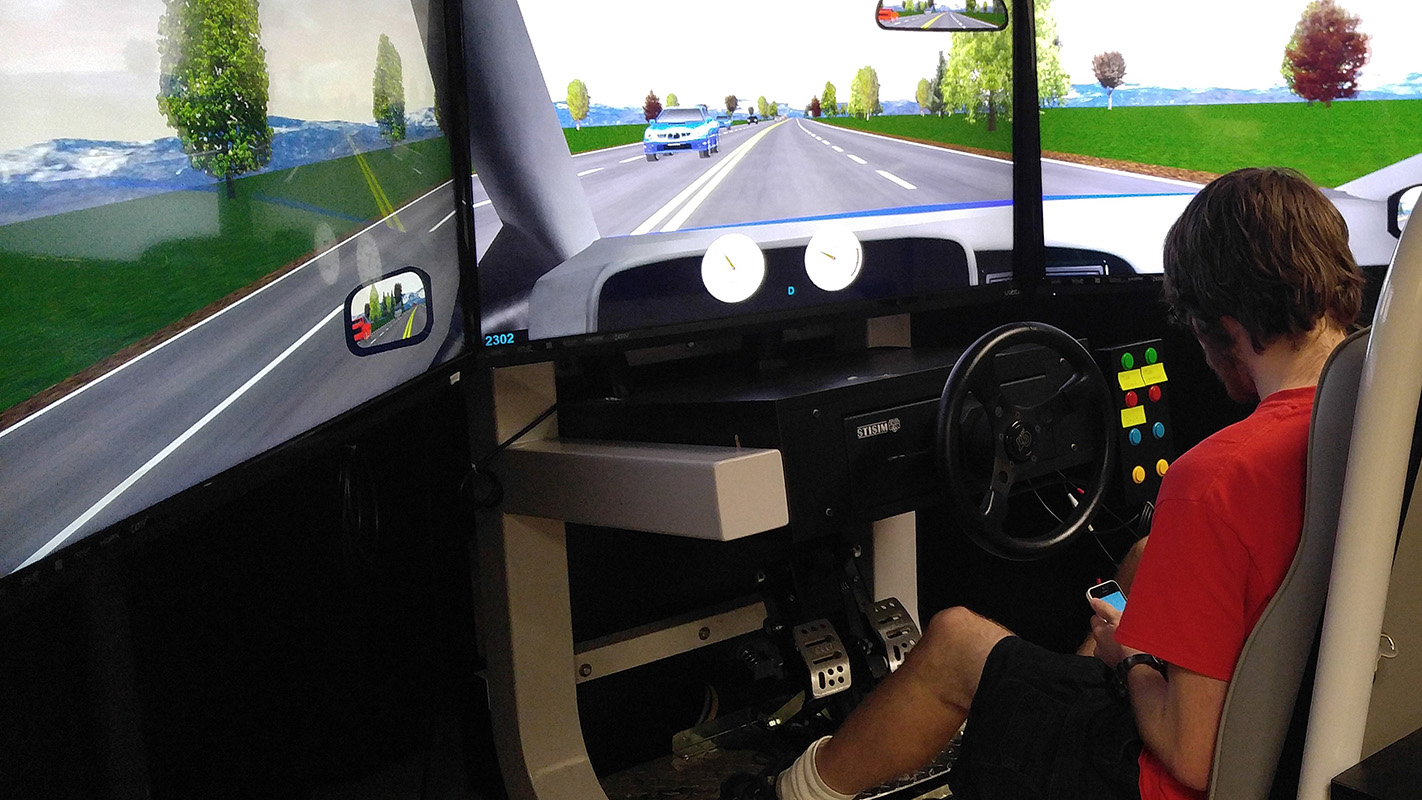Older Adults No Slower Than Young Adults at Taking Control of Semi-Autonomous Vehicles

For Immediate Release
New research from North Carolina State University finds that older adults have comparable response times to young adults when tasked with taking control of a semi-autonomous vehicle.
“Before we see fully autonomous cars enter the marketplace, we are likely to see semi-autonomous vehicles on the road; to a certain extent, we’re seeing hints of this already,” says Jing Feng, an assistant professor of psychology at NC State and senior author of a paper on the work. “These cars will handle the driving most of the time, but will require drivers to take control of the vehicle under certain circumstances – such as when the weather affects visibility.
“We wanted to know whether and how a driver’s age affects his or her ability to take control of the vehicle, and what sort of notification from the computer is most effective at getting drivers to take control in a safe and timely way,” Feng says. “For example, are there changes in driver response time as a result of age?”
To explore this issue, researchers performed an experiment with 35 drivers: 17 drivers between the ages of 18 and 35, and 18 drivers between the ages of 62 and 81.
Study participants were placed in a driving simulator and the concept of semi-autonomous vehicles was explained. Participants knew they would need to take control of the vehicle at some point, but were otherwise allowed to choose how to occupy themselves.
Driver behavior was observed by four video cameras, as well as via the simulator itself. The researchers also used two types of warning indicators, to tell drivers when they needed to take control of the vehicle: one type of indicator gave drivers a warning 4.5 seconds before the autonomous system shut off; the second type of indicator gave drivers a warning 7.5 seconds before the system shut off.
After analyzing the results of the experiment, researchers found that younger drivers primarily made use of electronic devices, while older drivers predominantly engaged in conversation. The researchers also found that older drivers responded to the warnings as quickly as younger drivers, though older drivers fared slightly better with the earlier, 7.5 second warning. There was also some discrepancy in post-takeover behavior.
Older drivers, for example, tended to brake harder than young drivers.
“While this sort of braking behavior could cause traffic problems, ultimately both age groups were capable of taking over the vehicle in a safe and timely way,” Feng says.
“That is despite the fact that we found older drivers engage in secondary, non-driving activities more than we expected – though it was still less than the younger group,” Feng says.
The paper, “Age Differences in the Takeover of Vehicle Control and Engagement in Non-driving-related Activities in Simulated Driving with Conditional Automation,” is published in the journal Accident Analysis & Prevention. Lead author of the paper is Hallie Clark, a Ph.D. student at NC State. The work was supported, in part, by the Highway Safety Research Center.
-shipman-
Note to Editors: The study abstract follows.
“Age Differences in the Takeover of Vehicle Control and Engagement in Non-driving-related Activities in Simulated Driving with Conditional Automation”
Authors: Hallie Clark and Jing Feng, North Carolina State University
Published: Sept. 27, Accident Analysis & Prevention
DOI: 10.1016/j.aap.2016.08.027
Abstract: High-level vehicle automation has been proposed as a valuable means to enhance the mobility of older drivers, as older drivers experience age-related declines in many cognitive functions that are vital for safe driving. Recent research attempted to examine age differences in how engagement in non-driving-related activities impact driving performance, by instructing drivers to engage in mandatory pre-designed activities. While the mandatory engagement method allows a precise control of the timing and mental workload of the non-driving-related activities, it is different from how a driver would naturally engage in these activities. This study allowed younger (age 18–35, mean age = 19.9 years) and older drivers (age 62–81, mean age = 70.4 years) to freely decide when and how to engage in voluntarily chosen non-driving-related activities during simulated driving with conditional automation. We coded video recordings of participants’ engagement in non-driving-related activities. We examined the effect of age, level of activity-engagement and takeover notification interval on vehicle control performance during the takeover, by comparing between the high and low engagement groups in younger and older drivers, across two takeover notification interval conditions. We found that both younger and older drivers engaged in various non-driving-related activities during the automated driving portion, with distinct preferences on the type of activity for each age group (i.e., while younger drivers mostly used an electronic device, older drivers tended to converse). There were also significant differences between the two age groups and between the two notification intervals on various driving performance measures. Older drivers benefited more than younger drivers from the longer interval in terms of response time to notifications. Voluntary engagement in non-driving-related activities did not impair takeover performance in general, although there was a trend of older drivers who were more engaged in non-driving-related activities braking harder than those with low activity- engagement during the takeover.
- Categories:


